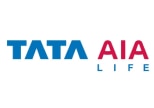Difference Between EPF, VPF, And PPF
Table of Contents
The youthful population finds it sensible to favor EPF, VPF, and PPF over all other investment/retirement choices based on the low-risk average return (and vice versa) guideline. Let's look at why.

Difference Between an EPF, a VPF, and a PPF?
The following are the significant distinctions between an EPF, VPF, and PPF:
Eligibility
Employees of a registered Employee Provident Fund organization, such as this, have access to an EPF fund for investment. A VPF fund is also available to the same customers who qualify for a PPF, although a PPF is open to all Indian residents.
Contribution of Employees and Employers
In an EPF account, both the employee and the employer contribute 12 percent of the employee's salary + Da, whereas in a VPF account, the employee can add additional funds to his EPF contributions while the employer's contribution remains the same as required for the EPF account, and in a PPF account, the customer can invest as much as he wants and the government pays interest on the 31st of March each year.
Period of Lock-In
Both EPF and VPF funds bind members to the fund's limits until they retire or cease working fully, whereas PPF funds have a lock-in duration of up to 15 years to promote long-term disciplined savings.
Benefits from Taxes
Any investments are eligible for tax deductions under Section 80 C of the Indian Income Tax Act, and all returns on these funds are also tax-free.
Interest has been Paid
EPF and VPF funds get 8.50 percent interest, whereas PPF funds earn varying rates of interest, average 7.10 percent.
Withdrawals Made Too Soon And A Loan Facility
While an EPF and a VPF fund do not allow for a loan, they do allow for a premature withdrawal of the accumulated money, whereas PPF funds allow for a loan after three years of investing.
Provident Fund for Employees (EPF)
Employee Provident Funds (EPFs) are a type of long-term savings plan that is typically used for retirement planning. It was started under the watchful eye of the Indian government and is governed by the Ministry of Labour through the Employee Provident Fund Organization. Every month, both the employee and the company contribute money to the fund. The initiative encourages employees to plan for their post-retirement lives while they are still working so that they would be able to support themselves once they stop working.
Voluntary Provident Fund
The Voluntary Provident Fund (VPF) is an add-on feature of an Employee Provident Fund (EPF), in which an employee who contributes 12 percent of his or her salary to EPF can increase their contribution with no upper limit. The employee can add more funds to enjoy the same interest and other benefits as a working EPF account, but the employer's contribution remains the same.
Public Provident Fund (PPF)
The Public Provident Fund (PPF) is one of India's most popular and widely used savings vehicles, available to all people. It's one of the most enticing long-term savings programs since it's a government-backed fund that offers consistent and secure returns, with the interest rate set by the government at the conclusion of each financial quarter. In addition, the fund provides a variety of extra benefits.
Take Away
The best way to evaluate which of these plans is better for long-term savings is to look at a comparative study of the aspects that would influence the investor's decision. Because EPF and VPF are restricted to only working employees of registered companies, whereas PPF is open to all, a person invested in EPF can make the best choice for the investment of his additional savings whether he wants to continue to enjoy the same benefits of EPF, which could be done by investing through VPF, or go for the benefits of a PPF account.
Also read- Investment Options For Salaried People
Know How To Purchase Life Insurance Policy Under Married Womens Protection Act
Disclaimer: This article is issued in the general public interest and meant for general information purposes only. Readers are advised not to rely on the contents of the article as conclusive in nature and should research further or consult an expert in this regard.









































